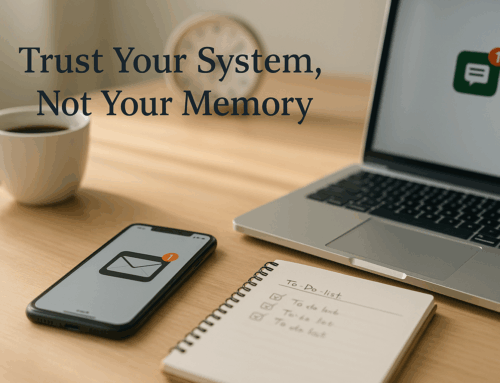There’s a curious story about someone trying to remember their to-do list using mnemonic techniques such as memory palaces. On face of it, it may look like some solution, but to me it’s far removed from day-to-day practicality. The story appears in Moonwalking with Einstein, a thought-provoking book that explores the nature of memory and how it plays a role from showmanship in memory championships to cognitive expertise in chess and chicken sexing.
A to-do list is a beast that changes shape faster than an amoeba. Trying to manage it entirely in memory can become mentally exhausting—often requiring more effort than completing the tasks themselves.
So, do mnemonics have a place in personal productivity? The answer is yes—but their strength lies in more stable, contextual areas.
1. Aiding the Recall of Stable Frameworks
Some mnemonics have become so ingrained in our thinking that we forget they’re memory tools at all. Consider “5Ws and 1H”—Who, What, When, Where, Why, and How. This simple framework helps structure writing, problem-solving, and meeting agendas.
But mnemonics don’t need to be universal. Many of the most useful ones are personal.
When I read Grady Booch’s book on Object-Oriented Design some 25 years ago, I created two mnemonics to remember the key concepts of the object model: HEMA (as in Hema Malini) and TCP (as in TCP/IP). I may have done it grudgingly—but to this day, I still recall them. That’s the staying power of a well-anchored mnemonic.
Even outside of work, mnemonics help bring structure to routine actions. Before heading out for table tennis, I mentally tick off “3 whites”—a personal shorthand for packing three essential white items. For swimming, I’ve organized the dozen items I need into four easy-to-remember triads:
- Dry clean clothes
- Swimming gear
- What I’m wearing
- General essentials
Such mental routines save time and reduce the likelihood of forgetting something important. Without them, you often end up with those familiar “oops” moments.
2. Structuring Thought Flow in Speaking
Mnemonics also play a valuable role in communication—especially when speaking without slides or notes.
One reference in Moonwalking with Einstein that particularly caught my attention was from De Oratore by Cicero. He advised speakers to place vivid mental images at specific “loci” (locations) in a familiar imagined space—a technique now known as the memory palace. Each image corresponds to a key point in the speech. As the speaker mentally moves through the space, the images act as cues to guide the flow of delivery.
In casual settings, a small cue card may suffice. But in formal environments—where the audience’s eyes are on you—glancing away to check notes can be distracting. A mnemonic-based structure, on the other hand, stays quietly in the background. It helps the speaker maintain fluency and presence without breaking connection.
Mnemonics are not an all-purpose solution to productivity. They won’t manage your task list or handle shifting priorities. But they do support the recall of stable, high-value information and provide structure in contexts where clarity, fluidity, and confidence matter.
Whether you’re packing for a workout, preparing for a talk, or organizing mental models from your field—mnemonics help you remember what’s worth remembering.
Subscribe to my newsletter, to get tips like this and more, directly in your inbox!
(Originally published in Times of India on May 09, 2025)






